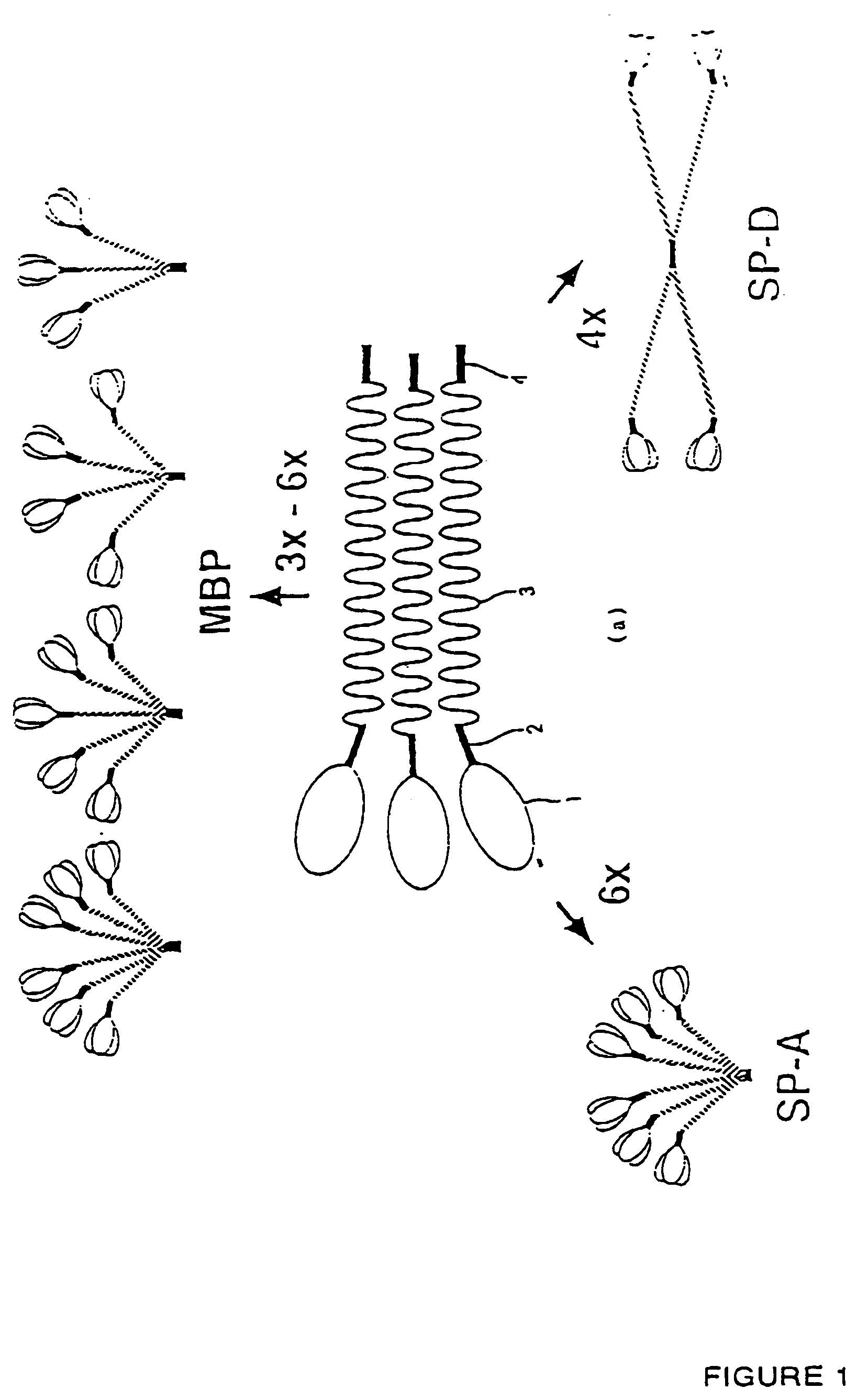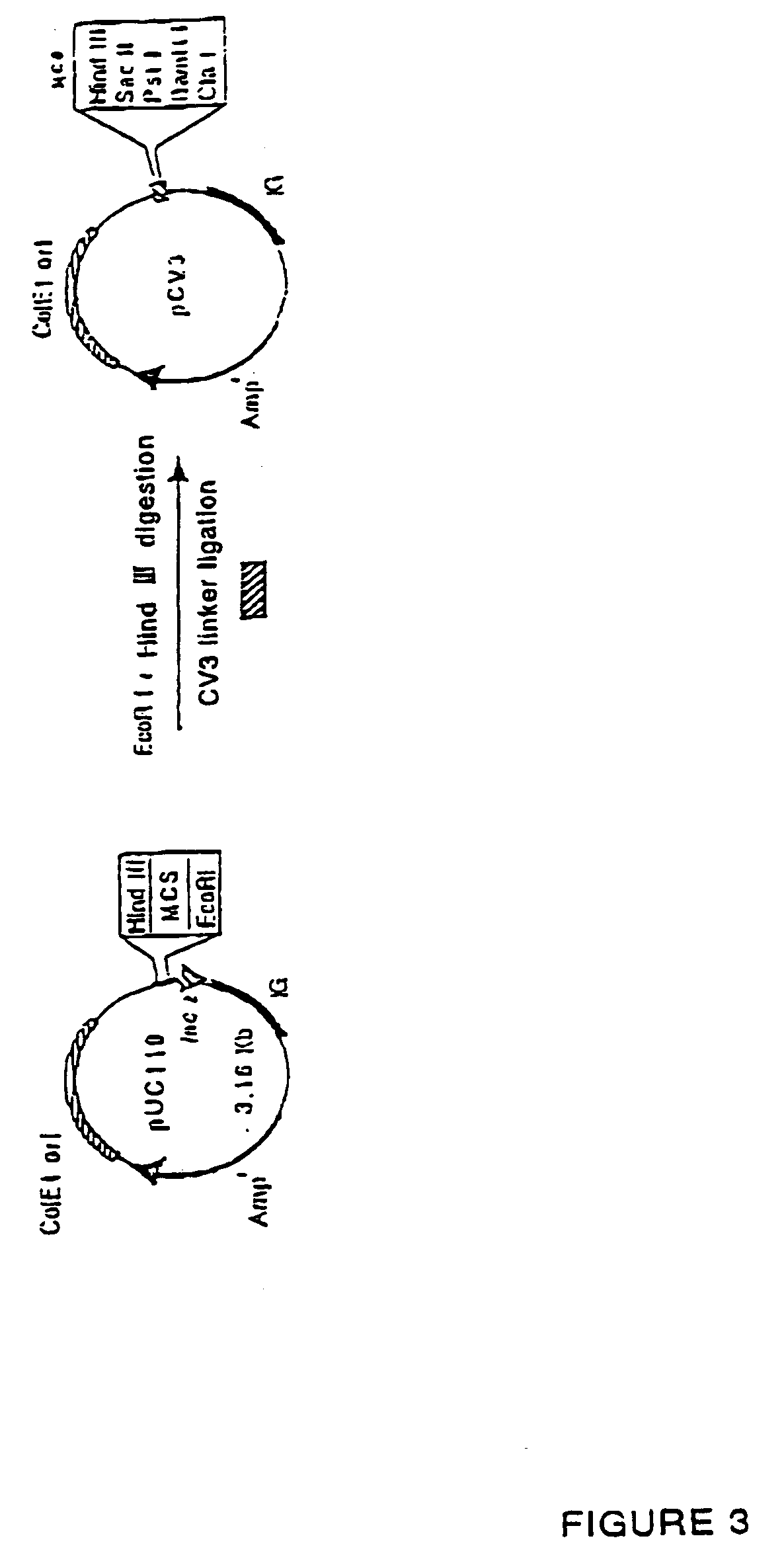Recombinant human Mannan-Building Proteins
a technology of mannan and building proteins, which is applied in the field of recombinant human mannan-building proteins, can solve the problems of insufficient recombination of hmbp, low yield, and difficulty in continuous production of hmbp, and achieves the effects of increasing the production cost, and increasing the production cos
- Summary
- Abstract
- Description
- Claims
- Application Information
AI Technical Summary
Benefits of technology
Problems solved by technology
Method used
Image
Examples
example 1
Preparation of Plasmid pNOW1
[0050] (1) Preparation of Back Bone Vector pBBV (FIG. 2)
[0051] Sense DNA having the base sequence set out in SEQ. ID. NO:3 and Anti-Sense DNA having the base sequence set out in SEQ. ID. NO:4 respectively were synthesized to additionally incorporate them as a linker (BBV linker) for multi-cloning sites into plasmid pUC18 (Takara Shuzo).
[0052] Sequence at site to be restricted by restriction enzymes in such linker is 3′-NdeI-SacII-ClaI-EcoRV-SplI-EcoRI-ApaI-5′ and 5′-end thereof is Blunt End. Coding region for lacZ were completely removed by digesting 1 ng (0.1 μl) of plasmid pUC18 with restriction enzymes NdeI and PvuII.
[0053] Into this solution, 100 pmole of sense DNA and anti-sense DNA respectively for BBV linker were added, then 2.0 μl of solution I attached to DNA ligation kit Ver.2 (Takara Shuzo) were further added, and these were reacted at 16° C. for 30 minutes, 0.1 ml of Escherichia coli competent cell XL1-BLUE (STRATAGENE) was added to the re...
example 2
Construction of Expression Vector pNOW1-hMBP
[0142] First of all, hMBP sequences from its initiation codon to its stop codon were amplified from human liver cDNA library (Clontech) with a zymoreacter (Alto) by using the primer having the base sequence of AAGGAAAAAAGCGGCCGCATGTCCCTGTTTCC ATCACTC (SEQ. ID. NO:26) and that having the base sequence of GCTCTAGATCAGATAGGGAACTCACAGAC (SEQ. ID. NO:27).
[0143] hMBP cDNA so obtained were digested with the restriction enzymes of NotI and XbaI, and cDNA corresponding to 66812 bp in such cDNA (SEQ. ID. NO:2) so obtained were employed as an insert.
[0144] Then, the expression vector pNOW1 prepared in Example 1 was digested with the restriction enzymes of NotI and XbaI, and said insert was inserted with DNA ligation kit (Takara Shuzo) into the downstream of cytomegalovirus promoter (pCMV), namely, between pCMV and BGP polyA (corresponding to (bGHpA)2 in FIG. 11). The expression vector so prepared was designated as Plasmid pNOW1-hMBP, and its struc...
example 3
Selection of Expression Clone
[0145] (I) Introduction of Expression Vector pNOW1-hMBP into Chinese Hamster Ovar (CHO) Cells Lacking Dihydrofolate Reductase (dhfr−)
[0146] Iscove's Modified Dulbecco's Medium (IMDM; GIBCO) not contained therein hypoxanthine and thymidine but supplemented thereto 10% bovine fetal serum (FCS, GIBCO) was prepared, then DG44 CHO cell strain lacking DHFR gene (dhfr−) were mixed therewith to be the concentration of 1×105 cell / ml, and they were inoculated into the dishes of 60 mm diameter and were cultured for 24 hours under the condition of 37° C. and 5% CO2. Culture supernatant was discarded, then IMDM containing 10% FCS were added to be 6 ml wherein IMDM contains 100 μl of solution prepared by mixing 5 μg of DNA (Expression Vector pNOW1-hMBP) with lypofectin solution (DOTAP Liposomal Transfection Reagent; Boehringer Mannheim), and Expression Vector pNOW1-hMBP was introduced into the host CHO cells of dhfr− by further adding thereto hypoxanthine (final con...
PUM
| Property | Measurement | Unit |
|---|---|---|
| molecular weight | aaaaa | aaaaa |
| volume | aaaaa | aaaaa |
| volume | aaaaa | aaaaa |
Abstract
Description
Claims
Application Information
 Login to View More
Login to View More - R&D
- Intellectual Property
- Life Sciences
- Materials
- Tech Scout
- Unparalleled Data Quality
- Higher Quality Content
- 60% Fewer Hallucinations
Browse by: Latest US Patents, China's latest patents, Technical Efficacy Thesaurus, Application Domain, Technology Topic, Popular Technical Reports.
© 2025 PatSnap. All rights reserved.Legal|Privacy policy|Modern Slavery Act Transparency Statement|Sitemap|About US| Contact US: help@patsnap.com



